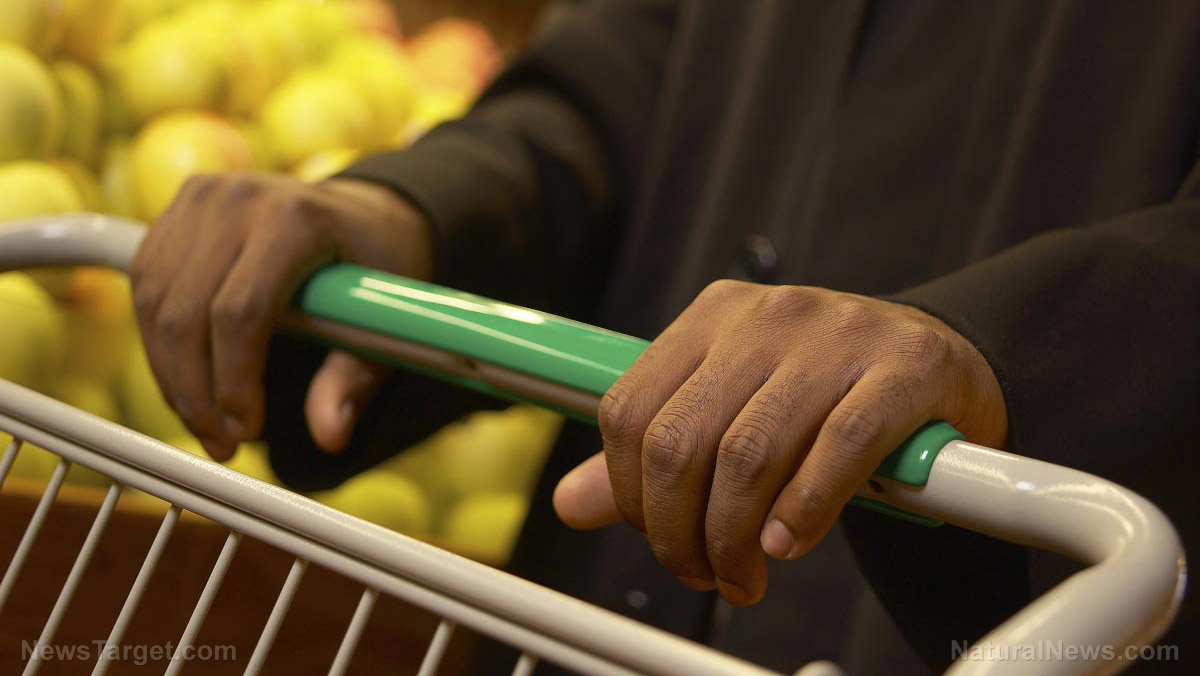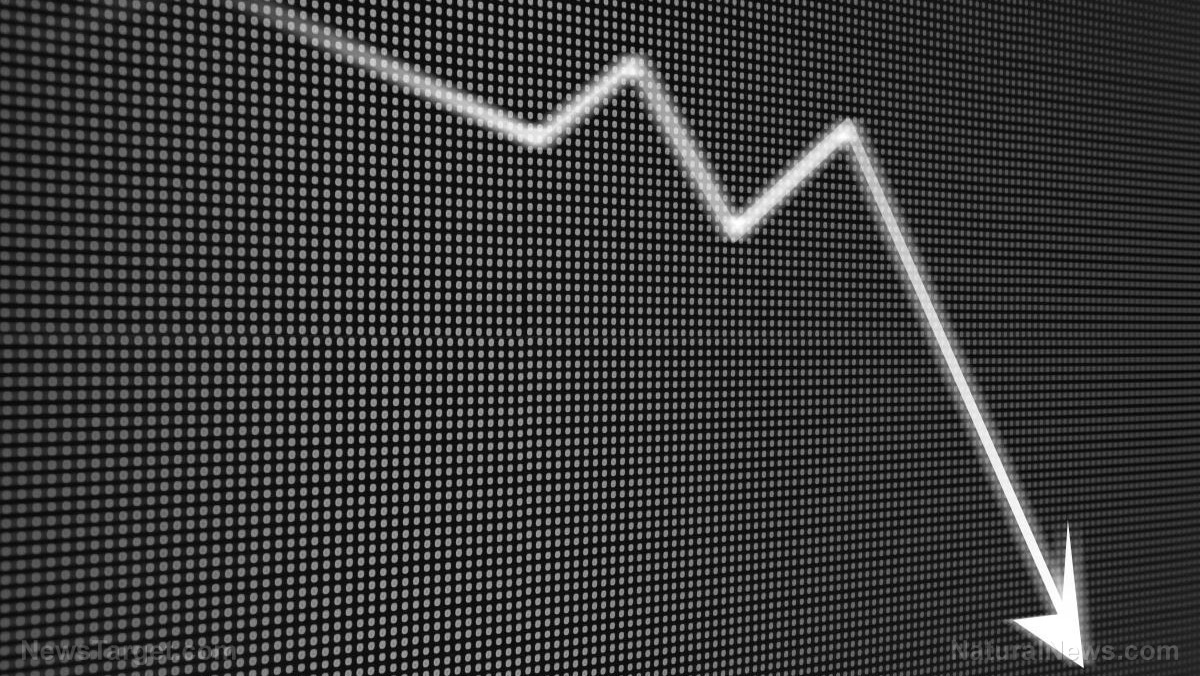Worldwide supply chain shortages may last until 2023 due to surge in household spending as people flee the collapsing dollar
11/18/2021 / By Matthew Davis

Experts said global supply chain shortages and snags may last until 2023, unless Americans stop buying so much.
Consumer demand remains high even in the middle of the Wuhan coronavirus (COVID-19) pandemic, which resulted in shortages in the U.S. and much of the world, according to the Associated Press (AP).
“Demand is completely skewed,” said Bindiya Vakil, CEO of Resilinc, a supply chain management consulting firm. “This has now become more and more painful by the day.”
Consumers, however, aren’t the only ones to blame for the shortages. Companies are ordering and stockpiling more goods and parts than they actually require in fear of running out. This stretches suppliers even thinner and makes it unlikely that they can ever catch up while demand, particularly for goods rather than services, is still roaring.
Boosted by food, gasoline and housing purchases, consumer prices have jumped 6.2 percent in the past year and pushed inflation to its highest rate since 1990. Spending is expected to start slowing when inflation begins to push certain goods outside the threshold of American budgets.
Manufacturers don’t anticipate the interconnected pressures of demand, supply chain woes and inflation to ease for the time being. Ford Motor Company revamped its system of ordering parts due to a chronic lack of computer chips. (Related: Top selling vehicles are being held back, made without computers as semiconductor shortage sweeps the globe.)
“It’s highlighted that the ‘just-in-time’ operating model that’s been prevalent in autos may not be the right operating model,” Hau Thai-Tang, Ford’s chief operations and product officer, told analysts.
Smaller companies are also building up supplies while they can so they can still make products. Moriarty’s Gem Art near Chicago, a family business for 40 years, has been stocking up on gold, silver and platinum to make necklaces and rings, desperate not to run out of supplies as holiday orders pick up.
“We’re ordering a lot more than what we actually have orders for — just in case,” said Jeff Moriarty, the company’s marketing manager.
Even a normal post-holiday shopping lull isn’t expected to be enough to unclog ports, speed shipping traffic or allow factories to replenish inventories.
“The baseline expectation for improvement is around the middle of 2022,” said Oren Klachkin, lead U.S. economist at Oxford Economics. “But I think the risks of that happening later are fairly high.”
Since April 2020, consumer spending on goods has jumped 32 percent. It’s now 15 percent above where it was in February 2020, just before the pandemic paralyzed the economy. Goods account for roughly 40 percent of consumer spending now, up from 36 percent before the pandemic.
U.S. factories have tried mightily to keep up with demand. Production rose nearly 5 percent over the past year, according to the Federal Reserve, despite periodic ups and downs, including disruptions to auto production caused by chip shortages.
Voracious demand for goods has accelerated as more people have become vaccinated in wealthier countries. Yet in poorer countries, especially in Southeast Asia, the spread of the delta variant forced new factory shutdowns in recent months and upset the supply chains again.
Labor shortages exacerbate supply chain problems
At the same time, many U.S. workers have decided to quit jobs that require frequent public contact. This created shortages of workers to unload ships, transport goods or staff retail shops. Last month, 65 ships waited off the California coast to be unloaded at the ports of Los Angeles and Long Beach. The average wait: 12 days.
That has since worsened to over a hundred ships, with an average wait of nearly 17 days, despite around-the-clock port operations.
Before the pandemic, ships were going straight to a berth for unloading, said Gene Seroka, the L.A. port’s executive director. Now, with Asian factory output at record highs, the port is moving record levels of goods. Yet it’s not enough to meet the demand.
As with ports, rail lines are moving more goods. Through early November, freight shipped by America’s railroads was up 7.5 percent from a year ago. Truck shipments were up 1.7 percent in September. Yet there aren’t enough drivers or trucks to move all the freight.
In China, manufacturers are also struggling with shipping delays, container shortages and cost increases. Shantou Limei International Ltd., which makes children’s toys in the city of Shantou, expects sales to fall 30 percent this year because of delays and costlier shipping.
“The most serious problem for us is being unable to deliver goods on time because of the difficulties in securing freight containers,” said Frank Xie, the company’s general manager. “A lot of things have gone beyond our controls and expectation.”
Follow Bubble.news for more news related to the economy.
Sources include:
Submit a correction >>
Tagged Under:
bubble, chaos, collapse, crisis, economy, grocery, holiday shopping, inflation, market crash, pandemic, price increase, products, shipping delays, shortages, supply chain, workers
This article may contain statements that reflect the opinion of the author
RECENT NEWS & ARTICLES
COPYRIGHT © 2022 CurrencyCrash.News
All content posted on this site is protected under Free Speech. CurrencyCrash.News is not responsible for content written by contributing authors. The information on this site is provided for educational and entertainment purposes only. It is not intended as a substitute for professional advice of any kind. CurrencyCrash.News assumes no responsibility for the use or misuse of this material. All trademarks, registered trademarks and service marks mentioned on this site are the property of their respective owners.




















